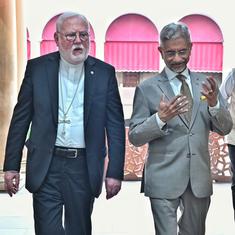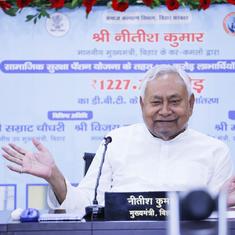In the latest twist in a back-and-forth that has been ongoing for over 30 years, the Supreme Court of India on May 20 reinstated the three-year legal practice requirement for candidates appearing for the civil judge (junior division) examination.
This judgement threatens to drive a significant pool of talent away from judicial service, making it an unattractive career path for many law graduates.
Civil judge (junior division) is the entry-level position in the district judiciary. Until now, fresh law graduates could directly appear for the judicial service examinations. The judgement changes that position: aspirants must now practice law for at least three years before even applying for the recruitment process.
Far from being a new debate, this ruling is merely the latest in a series of decisions stemming from a case that has been going on since 1989.
A brief legal history
After Independence, states followed divergent practices in prescribing qualifications for civil judges. Some required only a law degree, while others mandated at least three years of legal practice.
In 1993, the Supreme Court felt that in view of the uniformity in hierarchy, designation and service conditions among judges, there should be uniformity in their qualifications and the recruitment procedure as well. The court was of the view that neither bookish knowledge nor training could be an adequate substitute for first-hand courtroom experience.
Based on that rationale, a nationwide minimum period of three years of legal practice was mandated.
But in 2002, the Supreme Court did a volte face and abolished the requirement, relying on the recommendations of the Shetty Commission that had been established to study the service conditions and salary structures of judicial officers.
The commission had reasoned that doing so would attract bright young law graduates from the recently established national law schools, who otherwise preferred high paying jobs in multinationals and law firms over “struggling” as lawyers for three years.
In its recent judgment, the Supreme Court reinstated the minimum practice requirement on identical grounds as its 1993 judgment. It reiterates that fresh law graduates are not “steeped into the culture, etiquette, temper, and conduct of the court proceedings”. However, the court in its analysis completely ignores the rationale of its own 2002 decision passed in the same case.
A barrier, not a filter
The three-year moratorium is nothing less than a death knell for the aspirations of many judicial candidates.
Legal practice in India is fraught with economic, structural and cultural challenges. For law graduates from economically weaker backgrounds, jobs in litigation are a route best avoided. Junior lawyers are often paid extremely low stipends and rely on family support even for sustenance. The profession justifies this by claiming, “in litigation, your learning is your earning”.
Besides, the current format of judicial recruitment examinations assesses a candidate’s ability to memorise and reproduce legal provisions. They test neither the skills required of a practicing lawyer nor those essential for a judge. The exam neither rewards practical experience nor requires it.
Lastly, unlike the Supreme Court’s reasoning, which seems to go in circles, legal education has evolved in a gradual but progressive manner. At the time of the 1993 judgment, the LLB or Bachelor’s in Law programme took two years. Today, law degrees are five-year programmes with mandatory internships, simulated courts, legal aid clinics and academic research. Today’s graduates are far better prepared than their predecessors to engage with the justice system.
If India is still not producing desirable candidates despite this legal education system and rigorous competitive examination process, for which millions of candidates appear, perhaps the problem lies in the examination process. The answer cannot be to reintroduce a practice requirement that functions as little more than a trial by fire.
What is also telling is how little public discussion the judgement has attracted. This silence is symptomatic of a broader trend: while op-eds and editorials routinely dissect developments concerning the Supreme Court and High Courts, the district judiciary rarely features in national discourse. But district courts are the first line of defence of India’s justice delivery system. The lower judiciary is not any lower in importance.
Shivam Kaushik is an advocate in Delhi.










